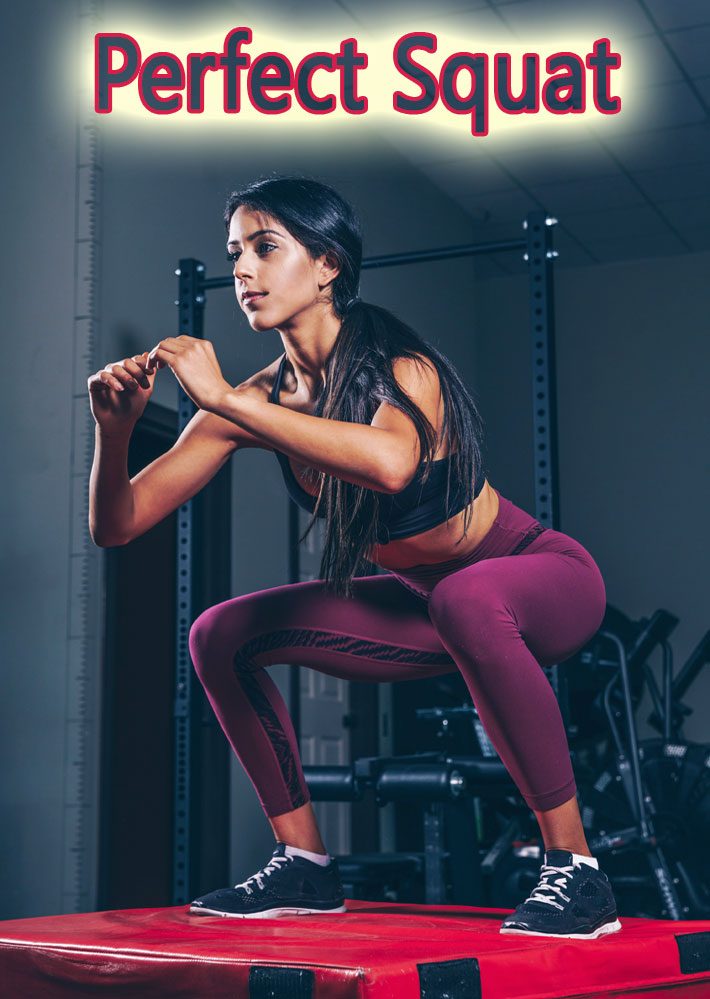
A squat is a movement where you start in a standing position and bend your knees to bring your bum as close as possible to your heels and then stand back up again. One squat done. Simple. But there are dozens of ways to do a squat (and quite a few ways to do it wrong) so we’re going to take you through how to do the unweighted squat properly which will set you up to progress onto performing the many weighted variations without doing yourself a mischief. But first…
What Are The Benefits Of Squats?
Your time is precious, so the best exercises are compound moves – the ones that work a number of muscle groups at the same time. That’s the squat all over. Squats are excellent for all your leg muscles (the quadriceps, hamstrings and calves), and they also strengthen the stabiliser muscles and supporting ligaments which help your main leg muscles work more efficiently, as well as making you stronger and less injury-prone for sports.
Done properly, squats also help improve your flexibility and strengthen your ankles and hips, which is another way they help prevent injuries. And we’re still not done yet. Squats also work your abs to help you along the road to an impressive six-pack. Have we convinced you it’s an excellent all-round exercise? Good.
How To Squat
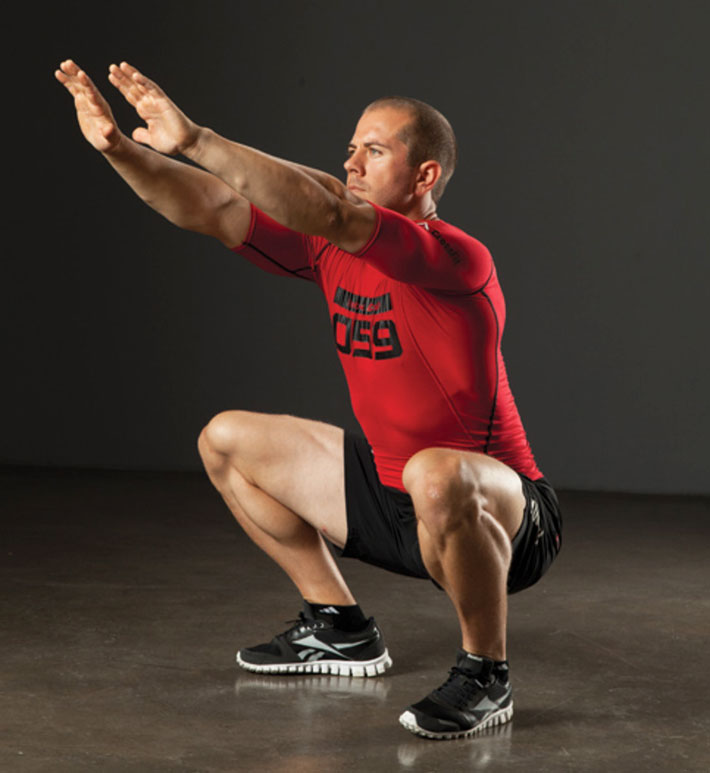
Even if you plan on trying each and every one of the many weighted squat variations listed below, it’s wise to start by nailing your form with an unweighted squats – also known as a bodyweight or air squats.
Begin by standing with your feet hip-width apart. Hold your arms out in front of you, or fold them across your chest, or even stick them out to the sides. They can go anywhere but on your legs.
Brace your core and lower until your thighs are parallel to the ground. Imagine you’re sitting back into an invisible chair. If you want to and it feels comfortable, you can continue to lower past this point into a deeper squat. If you’re concerned that you’re not dropping low enough with your squats, put a box or chair behind you that’s at or just below knee height, then lower until you just touch it with your bum to ensure you’re reaching the required depth. Drive through the heels to stand up and complete the rep.
Squat Form Tips
1. Toes
“You want your toes to point the way that feels most natural, either straight forward or to the sides,” says Adam Hayley, PT at Ultimate Performance. “If squatting feels tight or restricted, try pointing your toes to ten and two to align your feet with your thighs and improve ankle mobility.”
2. Heels
“Your heels are your main point of contact with the ground when squatting, and you should drive through them hard when you start to move back up,” says Hayley. “If you have very poor ankle mobility you can elevate your heels on weight plates to squat deeper.”
3. Knees
“You never want your knees to roll inwards because it’s a fast route to problems,” says Hayley. “When you stand back up, focus on pushing your knees out to the sides to activate more stabilising muscles to keep your body stable for more power output.”
Squat Variations
Box squat
All you need for this variation is a box and your bodyweight. The lower the box, the harder the exercise will be. Stand just in front of your box and raise one leg in front of you. Lower onto the box until your glutes are resting on the surface. After 1-2sec, drive back up using your heels and hips.
Squat jump
One of the key performance benefits of the common-or-garden squat is explosive power. To get more of that benefit, and quicker, add squat jumps to your routine. Drop into a squat, then explode upwards by driving through the heels while contracting your hamstrings, glutes and quads. Keep your back straight and land softly with a slight bend in your legs to avoid injury.
Squat thrust
This exercise is basically a slightly less demanding burpee, and so it works muscles all over the body as well as ramping up your heart rate. From a standing position, drop into a squat and put your hands on the ground in front of you, kicking your feet out behind you so you finish in a press-up position. Then jump your feet back up to your hands and stand up.
Bulgarian split squat
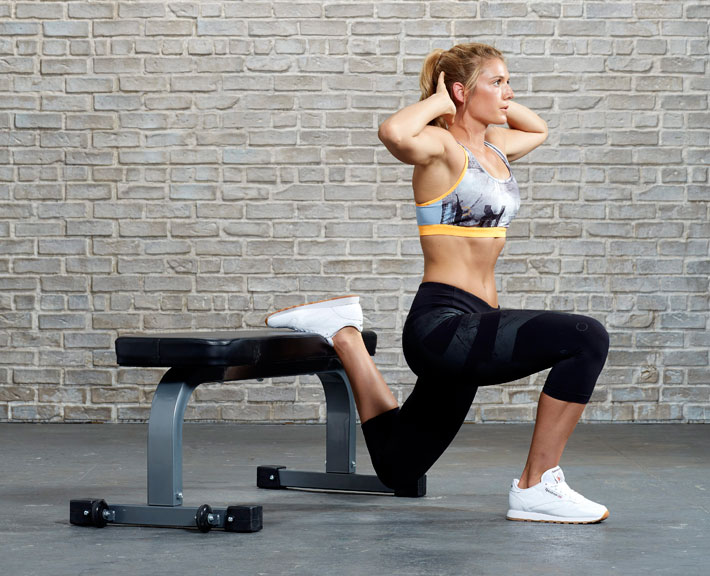
If you really want to challenge your core elevate the back leg in a split squat, which ups the load on your front leg and tests your balance all the more. The form is the same as the split squat, but you rest your back foot on a bench or step that’s around knee height.
Goblet squat
The goblet squat can be performed with a kettlebell or dumbbell, which should be held to your chest with your elbows tucked in. The goblet squat is a good way for beginners to add weight to their squats while ensuring they maintain correct form, and acts as a stepping stone from air squats to barbell back and front squats. Keeping the weight close to your chest is also beneficial for your back stability and core strength.
Back squat
The daddy of compound lifts, the back squat does it all when it comes to strengthening your lower body, boosting the benefits of the movement through the increased challenge of the weight. Start with the barbell resting on your rear shoulder muscles, then lower into a squat and power back up, keeping the weight on your heels as you do.
Barbell split squat
Putting extra focus on one leg with the split squat not only increases the benefits of squatting for that leg, but also challenges your core stability. From a standard back squat position take one big step backwards, with your heel raised so your back foot is on its toes. Lower slowly until your back knee is almost touching the ground, then rise back up.
Front squat
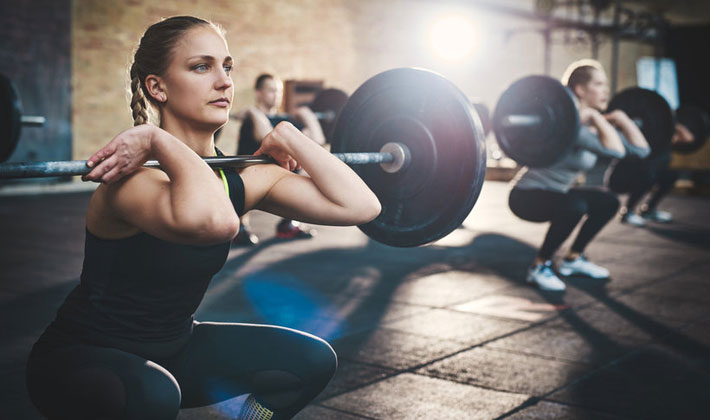
A natural progression from the goblet squat, the front squat puts more focus on the quads than the back squat, and also challenges the core which is constantly working to keep the upper body balanced. The key in this lift is to create a “shelf” across the front of your shoulders where you can safely hold the barbell. Focus on keeping your elbows up and pointing forwards – this ensures the bar won’t pull you forwards.
Landmine squat
Fed up with holding the barbell in the middle? Then try the landmine squat. Load up one end of a bar and hold it in both hands in front of your chest, with the other end on the floor. Then lower into a squat. This exercise allows you to lift a lot of weight without putting so much pressure on your joints.
Overhead squat
When you’ve mastered every other squat going, give the very tricky overhead squat a go to increase the challenge to your legs and core. Stand holding a barbell overhead with your hands shoulder-width apart and your arms straight. Then squat. Good luck.

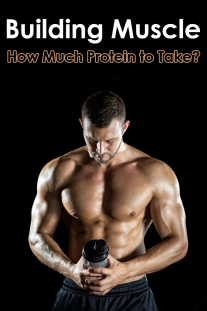
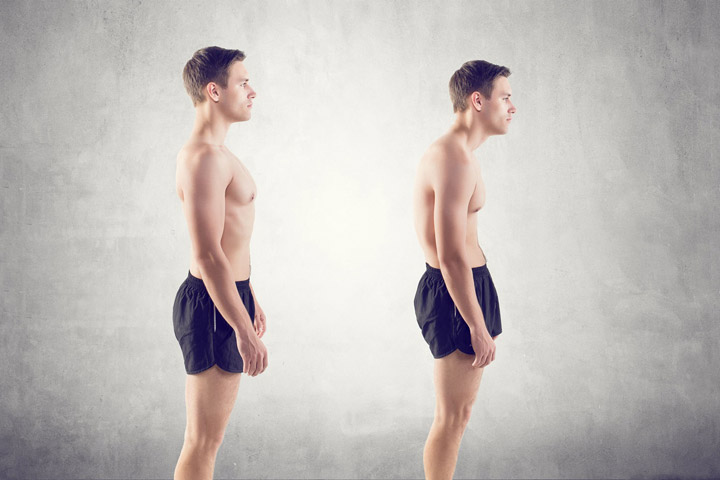
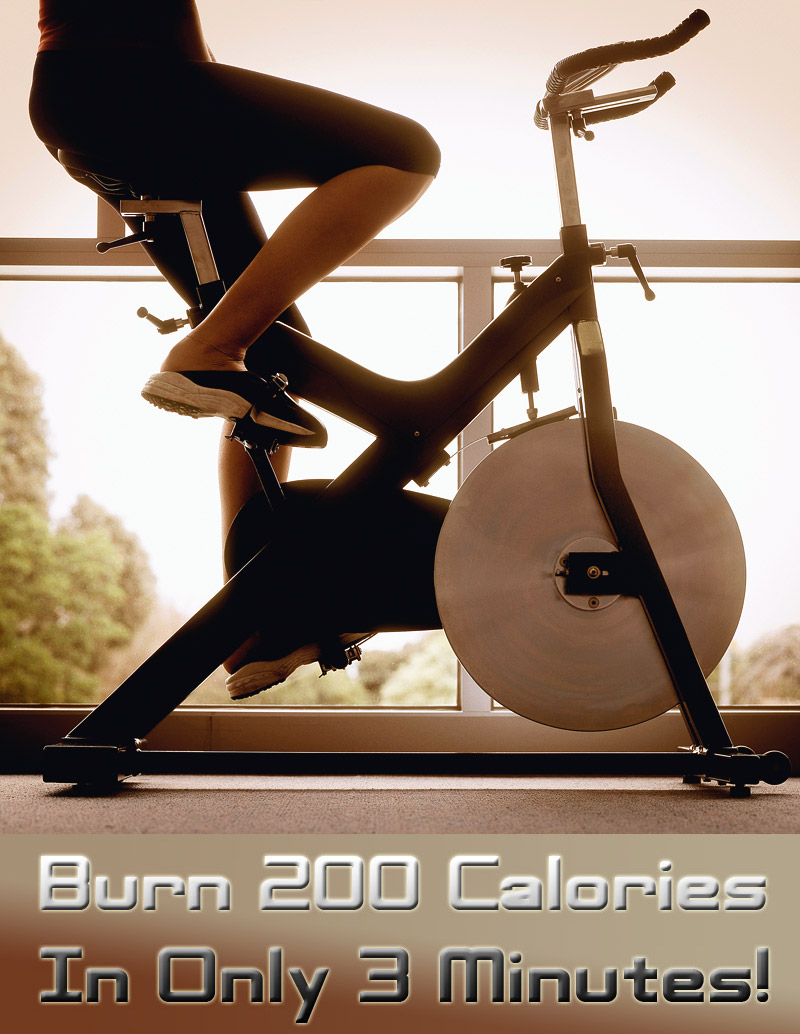
Leave a Reply